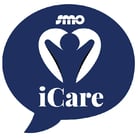.jpg)
.jpg?width=5000&name=Tips%20on%20Creating%20a%20Successful%20Recycling%20Program%20%20(1).jpg)
A successful recycling program is an important component within any green cleaning initiative.How to Implement a Green Cleaning Program-Part 1, How to Implement a Green Cleaning Program-Part 2. Creating a successful recycling program requires a commitment to the processes and education necessary to instill buy-in and promote compliance throughout the organization.
Do you want to make your recycling program more effective? Forty years of recycling history have yielded a few time-tested tips.
Audit Your Waste
Do you know the types and quantities of waste being produced by your operation? Conduct an audit to collect some objective data. A typical audit would cover one month's worth of waste production. You will likely be surprised by some of the results. In general, these fact-finding exercises reveal that we have underestimated the size and content of our waste footprints.
Identify What Can be Recycled
Once you have conducted your waste audit the next step will be to determine what can and cannot be recycled. Some items will be fairly obvious---paper, plastic, etc. Other materials could be a bit trickier. Recycling guidelines vary from state to state and, in some cases, from city to city. When in doubt, consult your applicable city/state administration. In most cases you can obtain a list of approved recyclables that you can refer to.
Creating a successful recycling program requires the ability to differentiate between what can be recycled vs what can not.
Make the Process Clear and Simple
As with any program that is dependent upon mass participation and compliance, simple and easy is best. Make sure the facility’s occupants have easy access to recycling containers. The recycle containers should be clearly marked. Use consistent colors and markings to differentiate between regular trash and recycle containers. When possible, post easy-to-read listings or symbols of recyclable and non-recyclable items that can be referenced by your employees and/or occupants.
Close the Loop
A successful recycling program is a two-way street, requiring active participation in a closed-loop system. In addition to proper recycling of your waste products you should also, to the extent possible, buy products that have been recycled. The availability of recycled products is at an all-time high, providing buyers with a host of choices when sourcing supplies for their operations.
Establish and Support the Culture
Demonstrate an active commitment to your recycling program. Make sure that your organization understands that “recycling” is more than just a feel-good buzzword. If necessary, re-educate your organization on the benefits of recycling and show how your participants are contributing to the "greater good". Report on your progress and set up a process for recognition of those individuals that are setting examples for the rest of the operation.
Creating a successful recycling program requires some planning, work, education, and follow-up. However, once up and running, your program can pay dividends monetarily, socially, and environmentally.



.jpg?width=220&height=135&name=Blog%20Listing%20Image%20(14).jpg)
.jpg?width=220&height=135&name=Blog%20Listing%20Image%20(8).jpg)

.png?width=180&height=138&name=Untitled%20design%20(25).png)


